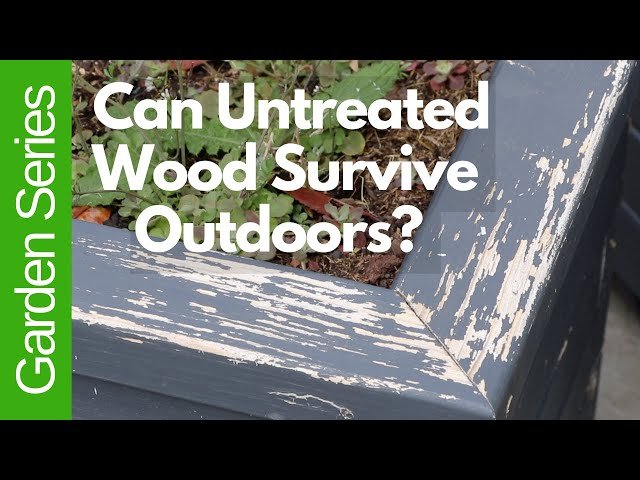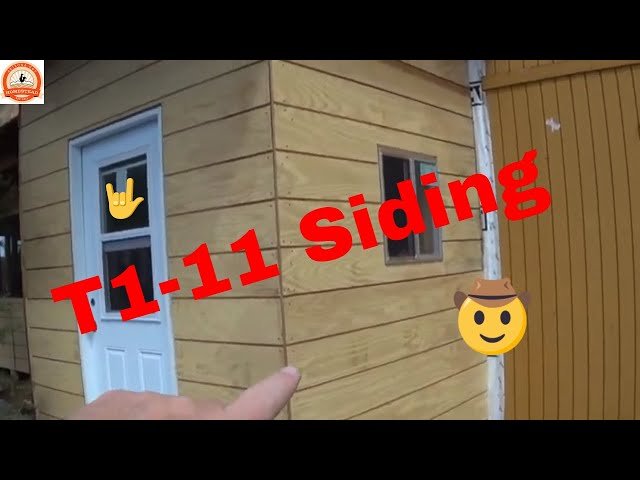Untreated wood left outside is subject to the elements, leading to decay and deterioration over time. How long does untreated wood last outside? The answer lies in understanding the factors at play, such as exposure to moisture, sunlight, and insects. Without proper protection, untreated wood can start to show signs of wear within a few months. However, with the right care and maintenance, its lifespan can be extended significantly. Let’s delve deeper into the world of untreated wood and uncover its secrets of endurance in outdoor environments.
How Long Does Untreated Wood Last Outside: A Comprehensive Guide
Welcome, nature lovers! Have you ever wondered about the fascinating journey of untreated wood when left exposed to the elements? In this detailed guide, we will delve into the world of outdoor wood durability and explore the question: how long does untreated wood last outside? Join us as we uncover the secrets of nature’s influence on this natural material.
The Basics of Untreated Wood
Before we dive into the longevity of untreated wood outdoors, let’s understand what untreated wood is all about. Untreated wood refers to wood that has not undergone any chemical treatment or protective coating to enhance its durability. This raw form of wood is often used in outdoor projects due to its natural aesthetic appeal.
Factors Affecting the Lifespan of Untreated Wood
Several key factors play a crucial role in determining how long untreated wood can withstand the harsh outdoor conditions. Let’s explore these factors in detail:
1. Type of Wood
The type of wood used significantly impacts its durability outdoors. Some wood species, such as cedar and redwood, are naturally resistant to decay and insects, making them ideal choices for outdoor projects.
2. Exposure to Moisture
Moisture is a wood’s worst enemy when it comes to outdoor longevity. Excessive exposure to rain, snow, or high humidity levels can lead to rot and decay, significantly reducing the lifespan of untreated wood.
3. Sunlight and UV Exposure
Prolonged exposure to sunlight can cause untreated wood to fade, crack, and warp over time. UV radiation can break down the wood fibers, compromising its structural integrity.
4. Insect Infestation
Insects, such as termites and carpenter ants, are notorious for damaging untreated wood. Without any protective treatment, wood becomes vulnerable to insect infestation, leading to structural weaknesses.
5. Climate Conditions
The climate in which the wood is exposed plays a significant role in its longevity. Extreme temperatures, fluctuations in humidity, and harsh weather conditions can all impact the lifespan of untreated wood.
Estimating the Lifespan of Untreated Wood
While the exact lifespan of untreated wood outdoors can vary depending on the aforementioned factors, here are some general estimates based on different wood types:
1. Softwoods
Softwoods, such as pine and fir, are less durable than hardwoods and are more prone to decay and insect damage. On average, untreated softwoods outdoors can last anywhere from 1 to 5 years before showing signs of deterioration.
2. Hardwoods
Hardwoods, like oak and mahogany, are more resilient to outdoor conditions compared to softwoods. Untreated hardwoods can last approximately 5 to 15 years outdoors, depending on the environmental factors they are exposed to.
3. Rot-Resistant Woods
Some wood species, such as cedar and redwood, possess natural resistance to decay and insects, making them excellent choices for outdoor projects. Untreated rot-resistant woods can last anywhere from 15 to 30 years or more when exposed to outdoor conditions.
Enhancing the Longevity of Untreated Wood
While untreated wood may have a limited lifespan outdoors, there are measures you can take to prolong its durability:
1. Proper Maintenance
Regularly inspecting and maintaining untreated wood by sealing cracks, applying protective coatings, and keeping it clean can help extend its lifespan.
2. Sheltered Placement
Protecting untreated wood from direct exposure to harsh elements by placing it in covered areas or under awnings can help prevent premature deterioration.
3. Natural Finishes
Using natural wood finishes, such as linseed oil or beeswax, can provide a degree of protection to untreated wood against moisture and UV damage.
In conclusion, untreated wood outdoors can last anywhere from a few years to several decades, depending on various factors such as wood type, exposure to elements, and maintenance practices. By understanding these factors and taking proactive measures to protect and care for untreated wood, you can enjoy the natural beauty of wood in your outdoor projects for years to come.
We hope this guide has shed light on the fascinating world of untreated wood and its journey outside. Remember, nature has its way of influencing the lifespan of wood, so let’s appreciate and respect the raw beauty of this natural material in our outdoor endeavors!
How Long Can Untreated Wood Survive Outdoors?
Frequently Asked Questions
How does exposure to the elements impact the longevity of untreated wood outdoors?
Untreated wood left outside is subject to degradation from moisture, UV exposure, and insects. Over time, these factors can cause the wood to warp, crack, rot, or become brittle, significantly reducing its lifespan.
What is the typical lifespan of untreated wood when exposed to outdoor conditions?
The lifespan of untreated wood exposed to outdoor conditions can vary depending on the type of wood and the severity of the elements. On average, untreated wood left outside can last anywhere from 2 to 5 years before showing signs of significant decay.
Can anything be done to extend the lifespan of untreated wood used outdoors?
While untreated wood is not naturally resistant to outdoor conditions, taking preventive measures can help prolong its life. Applying a sealant, paint, or stain can provide some protection against moisture and UV rays, thus extending the lifespan of the untreated wood.
Final Thoughts
Untreated wood can last around 2-5 years outdoors, depending on the type of wood and environmental conditions. Without proper treatment, wood is vulnerable to rot, decay, and insect infestation. To extend the lifespan of untreated wood outside, consider applying a protective sealant or finish. Ultimately, understanding how long does untreated wood last outside can help you make informed decisions when it comes to outdoor projects.




